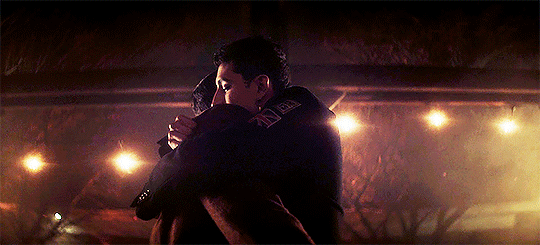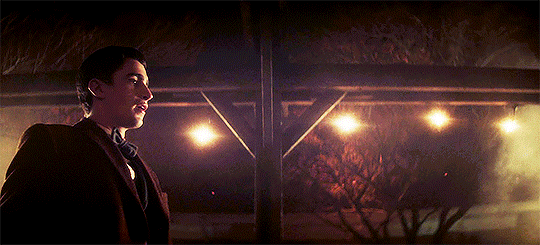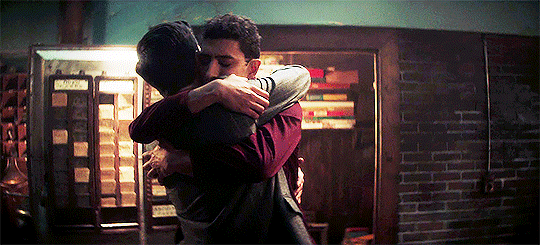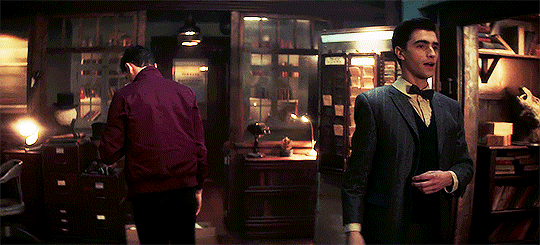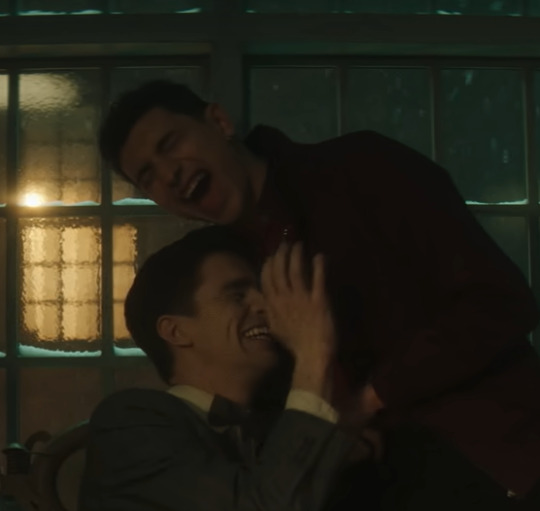What's the point of being clever if you can't prove it?
Don't wanna be here? Send us removal request.
Text
Quick Tips for Writing Protective Tension
One character immediately steps in when something happens, overprotective much? The other one is like, “Chill. I got this.”
They stand just a little too close, constantly checking if the other person’s okay, but trying (and failing) to be subtle about it.
“Be careful,” “Watch out,” or “Don’t do that,” every two seconds, like they’re babysitting, but it's all about concern.
One of them puts a hand on the other’s shoulder, almost possessively, like, “Don’t worry, I’m here.”
They instinctively move in front, even if it’s something minor like a crowded street or a heated argument.
2K notes
·
View notes
Text
Dialogue Prompts for Friendship
"You’re the best friend I’ve ever had."
"I’ll always have your back."
"You mean the world to me."
"We’ve been through so much together."
"I don’t know what I’d do without you."
"You’re like family to me."
"Thanks for always being there."
"I trust you more than anyone."
"You know me better than I know myself."
"Our bond is unbreakable."
452 notes
·
View notes
Text
If You’re Writing a Female Character, Avoid these Bad Writing Mistakes
Avoid focusing solely on how she looks, what she wears, or how attractive she is to others.
Don’t make her dependent on male characters for rescue or decision-making.
Avoid giving her unrealistic abilities without any training or explanation.
Avoid portraying her as constantly crying, screaming, or overly dramatic without depth.
Don’t make her entire character arc revolve around finding love or getting married.
Avoid creating her as the only female in a predominantly male cast just for diversity points.
Avoid having her dialogue filled with stereotypical phrases and overused expressions.
Ensure she has realistic imperfections and challenges to overcome.
4K notes
·
View notes
Text
Good Traits Gone Bad
Empathy turning into manipulation
Imagine a character who is deeply empathetic, someone who genuinely feels and understands the emotions of others. At first, this makes them incredibly compassionate and kind, always there to lend an ear or offer comfort. But over time, this empathy begins to shift. Instead of just understanding how others feel, they start to use that understanding to manipulate those around them. They know exactly what to say to get people to do what they want, twisting their caring nature into a tool for control. What once was a beautiful gift becomes a weapon, used to bend others to their will without them even realizing it.
Confidence becoming arrogance
Think of someone who exudes confidence—someone who knows their worth and isn’t afraid to go after what they want. This kind of self-assuredness is magnetic and inspiring, drawing people in. But sometimes, this confidence can grow into something darker. The character starts to believe they’re always right, that their way is the best and only way. They dismiss others’ ideas and opinions, thinking they know better than everyone else. What was once a healthy self-esteem turns into arrogance, pushing people away as they start to feel belittled and unappreciated.
Ambition turning into obsession
Picture a character who is ambitious and driven, always striving for the next big achievement. Their dedication is admirable, pushing them to work hard and aim high. But ambition can have a dark side, too. Slowly, their drive becomes an obsession. They start to focus solely on their goals, willing to sacrifice anything or anyone who stands in their way. Friends, family, and even their own health fall by the wayside as they chase success at any cost. What was once an admirable quality turns destructive, consuming them completely.
Loyalty becoming blind devotion
Loyalty is such a beautiful trait. A loyal character is dependable, someone who stands by the people they care about no matter what. But loyalty can also become dangerous if it goes too far. This character might start to overlook red flags or harmful behaviors, sticking by someone or something even when it’s clearly detrimental. They become so blindly devoted that they lose sight of their own well-being and moral compass. What starts as a positive trait turns into a kind of self-destructive stubbornness, harming them more than helping.
Courage turning into recklessness
Imagine someone who’s incredibly brave, always ready to face challenges head-on and stand up for what they believe in. At first, this courage is inspiring, giving them the strength to overcome obstacles and help others. But sometimes, courage can cross a line. It turns into recklessness, making them take unnecessary risks without considering the consequences. They start to believe they’re invincible, putting themselves and others in danger because they’re too focused on proving their bravery. What was once a powerful strength becomes a dangerous flaw.
Determination becoming stubbornness
There’s something admirable about a character who never gives up, no matter how tough things get. Their determination helps them push through difficulties and keep going when others might quit. But when that determination turns into stubbornness, it’s a different story. They refuse to change their minds, even when all the signs point to a different path. They ignore advice, dismiss alternative viewpoints, and stick to their course out of sheer willpower, even when it’s clearly not working. Their once-praiseworthy persistence becomes a source of frustration for those around them.
Optimism becoming naivety
Someone who always looks on the bright side, no matter what. Their optimism is contagious, lifting the spirits of those around them and helping them see the silver lining in every situation. But if they aren’t careful, this optimism can morph into naivety. They might start ignoring real dangers or fail to recognize when they’re being taken advantage of. Their rosy outlook makes them blind to harsh realities, and they become easily deceived or led astray, all because they’re so focused on seeing the good in everything and everyone.
Protectiveness turning into possessiveness
A character who is naturally protective of their loved ones, always looking out for them and ensuring they’re safe and happy. This protectiveness is heartwarming and makes those around them feel cherished. But when protectiveness goes too far, it can become possessiveness. The character starts to feel like they own the people they care about, becoming overly controlling and jealous. They start dictating others' actions, justifying it as care, but it’s really about their need to keep everything under their control. What started as a caring instinct turns into something suffocating and unhealthy.
Altruism becoming self-neglect
Think about a character who is incredibly selfless, always putting others' needs before their own. They’re the kind of person who would give you the shirt off their back, always ready to help, always there for everyone. But this selflessness can go too far. It turns into self-neglect, where they completely disregard their own needs and well-being. They keep giving and giving until they have nothing left, leading to burnout and exhaustion. Their altruism, while beautiful, ends up harming them because they don’t know how to set boundaries or take care of themselves.
Honesty becoming brutal bluntness
There’s a lot to be said for a character who is straightforward and honest, someone who tells it like it is and doesn’t sugarcoat the truth. People appreciate their transparency and trustworthiness. But when honesty turns into brutal bluntness, it’s no longer a positive trait. This character starts to disregard others' feelings, using their honesty as an excuse to be harsh and tactless. Their words cut deep, hurting those around them, all in the name of being truthful. What was once refreshing candor becomes a source of pain, as they lose sight of the importance of kindness in communication.
57K notes
·
View notes
Text
Describe your Main Character sheet
Skin
Tone: Pale, Rosy, Olive, Dark, Tanned, Alabaster, Ebony, Bronze, Golden, Fair
Texture: Smooth, Rough, Silky, Coarse, Flaky, Supple, Wrinkled, Calloused, Bumpy
Condition: Moles, Acne, Dry, Greasy, Freckled, Scars, Birthmarks, Bruised, Sunburned, Flawless
Complexion: Clear, Ruddy, Sallow, Glowing, Dull, Even-toned, Blotchy
Eyes
Size: Small, Large, Average, Tiny, Bulging, Narrow
Color: Grey, Brown, Blue, Violet, Pink, Green, Gold, Hazel, Crimson, Amber, Turquoise, Sapphire, Onyx
Shape: Doe-eyed, Almond, Close-set, Wide-set, Round, Oval, Hooded, Monolid
Expression: Deep-set, Squinty, Monolid, Heavy eyelids, Upturned, Downturned, Piercing, Gentle, Sparkling, Steely
Other: Glassy, Bloodshot, Tear-filled, Clear, Glinting, Shiny
Hair
Thickness: Thin, Thick, Fine, Normal
Texture: Greasy, Dry, Soft, Shiny, Curly, Frizzy, Wild, Unruly, Straight, Smooth, Wavy, Floppy
Length: Cropped, Pixie-cut, Afro, Shoulder length, Back length, Waist length, Past hip-length, Buzz cut, Bald
Styles: Weave, Hair extensions, Jaw length, Layered, Mohawk, Dreadlocks, Box braids, Faux locks, Braid, Ponytail, Bun, Updo
Color: White, Salt and pepper, Platinum blonde, Golden blonde, Dirty blonde, Blonde, Strawberry blonde, Ash brown, Mouse brown, Chestnut brown, Golden brown, Chocolate brown, Dark brown, Jet black, Ginger, Red, Auburn, Dyed, Highlights, Low-lights, Ombre
Eyebrows: Thin eyebrows, Average eyebrows, Thick eyebrows, Plucked eyebrows, Bushy eyebrows, Arched eyebrows, Straight eyebrows
Lips
Shape: Full, Thin, Heart-shaped, Bow-shaped, Wide, Small
Texture: Chapped, Smooth, Cracked, Soft, Rough
Color: Pale, Pink, Red, Crimson, Brown, Purple, Nude
Expression: Smiling, Frowning, Pursed, Pouting, Curved, Neutral, Tight-lipped, Parted
Nose
Shape: Button, Roman, Hooked, Aquiline, Flat, Pointed, Wide, Narrow, Crooked, Upturned, Snub
Size: Small, Large, Average, Long, Short
Condition: Freckled, Sunburned, Smooth, Bumpy
Build
Frame: Petite, Slim, Athletic, Muscular, Average, Stocky, Large, Lean, Stout, Bony, Broad-shouldered, Narrow-shouldered
Height: Short, Tall, Average, Petite, Giant
Posture: Upright, Slouched, Rigid, Relaxed, Graceful, Awkward, Stiff, Hunched
Hands
Size: Small, Large, Average, Delicate, Strong
Texture: Smooth, Rough, Calloused, Soft, Firm
Condition: Clean, Dirty, Manicured, Scarred, Wrinkled
Nails: Short, Long, Polished, Chipped, Clean, Dirty, Painted, Natural
Voice
Tone: Deep, High, Soft, Loud, Raspy, Melodic, Monotonous, Hoarse, Clear, Gentle
Volume: Loud, Soft, Whispery, Booming, Muted
Pace: Fast, Slow, Steady, Hasty, Measured
Expression: Cheerful, Sad, Angry, Calm, Anxious, Confident, Nervous, Excited, Bored
9K notes
·
View notes
Photo





By 真希 ※ Permission to upload this was given by the artist.
927 notes
·
View notes
Text
Symbolism in Writing
Weather Symbolism
Rain: cleansing, sadness, renewal, obstacles
Sunshine: happiness, hope, clarity, energy
Storms: conflict, turmoil, dramatic change
Snow: purity, stillness, coldness, isolation
Fog: confusion, mystery, uncertainty
Wind: change, freedom, unrest, communication
Animal Symbolism
Eagle: freedom, vision, strength, courage
Lion: bravery, power, leadership, pride
Dove: peace, love, innocence, spirituality
Wolf: loyalty, cunning, survival, community
Snake: transformation, danger, temptation, wisdom
Butterfly: transformation, beauty, impermanence
Plant Symbolism
Rose: love, beauty, passion, secrecy
Oak Tree: strength, endurance, wisdom
Willow Tree: sadness, flexibility, resilience
Lotus Flower: purity, enlightenment, rebirth
Ivy: friendship, fidelity, eternity
Cactus: endurance, protection, warmth
Object Symbolism
Mirror: self-reflection, truth, illusion
Key: opportunity, secrets, freedom
Bridge: connection, transition, overcoming obstacles
Candle: hope, spirituality, life, guidance
Clock: time, mortality, urgency
Mask: disguise, deception, concealment
Number Symbolism
One: beginnings, unity, individuality
Two: partnership, balance, duality
Three: creativity, growth, completeness
Four: stability, order, foundation
Five: change, adventure, unpredictability
Seven: mystery, spirituality, luck
Season Symbolism
Spring: renewal, birth, growth, hope
Summer: vitality, abundance, joy, freedom
Autumn: change, maturity, decline, reflection
Winter: death, stillness, introspection, endurance
Light and Darkness Symbolism
Light: knowledge, purity, safety, enlightenment
Darkness: ignorance, evil, mystery, fear
Shadow: the unconscious, secrets, mystery
Twilight: ambiguity, transition, mystery
Element Symbolism
Fire: passion, destruction, energy, transformation
Water: emotion, intuition, life, change
Earth: stability, grounding, fertility, growth
Air: intellect, communication, freedom, change
10K notes
·
View notes
Text
Villains vs. Antagonists (Guide For Writers)
Hey there, fellow writers and wonderful members of the writeblr community! 📚✍️ It's Rin here and...
Today, we're diving into a topic that's close to many writers' hearts: villains and antagonists. These characters often steal the show, driving our plots forward and giving our heroes something to push against. But here's the thing – while these terms are often used interchangeably, they're not quite the same. So, let's unpack this, shall we?
First things first, let's break down the difference between a villain and an antagonist. It's a distinction that can really elevate your storytelling game!
An antagonist is simply a character (or force) that opposes your protagonist. They're the obstacle, the challenge, the thing standing in the way of your main character achieving their goal. Here's the kicker: an antagonist doesn't have to be evil. They could be a rival love interest, a stern parent, or even nature itself.
A villain, on the other hand, is a specific type of antagonist. They're the bad guy, the evildoer, the character with malicious intent. All villains are antagonists, but not all antagonists are villains. Mind-blowing, right?
Let's look at some examples to make this clearer:
In "Romeo and Juliet," the feuding families are antagonists, but they're not villains. They oppose the protagonists' desire to be together, but they're not evil.
In "Harry Potter," Voldemort is both an antagonist and a villain. He opposes Harry (making him an antagonist) and he's also evil (making him a villain).
In "Cast Away," the island and the challenges of survival are the antagonists. There's no villain in sight!
Now that we've got that sorted, let's dive deeper into how to create these characters and use them effectively in your writing.
Creating Antagonists:
Define their opposition: What specifically does your antagonist do to oppose your protagonist? This could be physical, emotional, or ideological opposition.
Give them a reason: Why are they standing in your protagonist's way? Even if it's not justified, there should be a reason that makes sense to the antagonist.
Make them strong: Your antagonist should be a worthy opponent. They need to pose a real challenge to your protagonist to keep things interesting.
Consider their perspective: Remember, your antagonist is the hero of their own story. Try writing a scene from their point of view to understand them better.
Create contrast: Your antagonist should in some way contrast with your protagonist. This could be in values, methods, or personality.
Creating Villains:
Establish their evil: What makes your villain "bad"? Is it their actions, their beliefs, or both?
Develop their backstory: How did they become evil? A compelling villain often has a tragic or twisted history.
Give them dimensions: Pure evil can be boring. Give your villain some complexity – maybe they love their cat or have a soft spot for classical music.
Create a strong motivation: What drives your villain? Greed? Revenge? A twisted sense of justice? The stronger and more relatable the motivation, the more compelling your villain will be.
Make them smart: Your villain should be clever enough to pose a real threat. They should be able to anticipate and counter your protagonist's moves.
Now, let's talk about how to use these characters in different genres. Because let's face it, a villain in a romance novel is going to look very different from one in a fantasy epic!
In Romance: Antagonists in romance are often rivals for the affection of the love interest, or perhaps societal norms or family expectations standing in the way of true love. Villains are less common, but when they appear, they might be abusive exes or manipulative friends trying to sabotage the relationship.
Tip: In romance, make sure your antagonist's motivations are clear and relatable. We should understand why they're opposing the main relationship, even if we don't agree with their methods.
In Fantasy: Fantasy is ripe for both antagonists and villains. You might have a Dark Lord seeking to conquer the world (classic villain) or a rival magic user competing for the same goal as your protagonist (antagonist).
Tip: In fantasy, world-building is key. Make sure your antagonist or villain fits logically into the world you've created. Their powers, motivations, and methods should all make sense within the rules of your fantasy realm.
In Mystery/Thriller: In these genres, your antagonist is often the perpetrator of the crime your protagonist is trying to solve. They might not be evil (maybe they committed a crime of passion), or they could be a full-fledged villain if their crimes are particularly heinous.
Tip: In mysteries, your antagonist needs to be clever enough to challenge your detective protagonist. Leave subtle clues about their identity or motives, but make sure they're smart enough to almost get away with it.
In Literary Fiction: Here, antagonists are often more abstract. They might be societal expectations, personal flaws, or even time itself. Villains in the traditional sense are less common, but morally grey characters who oppose the protagonist are frequent.
Tip: In literary fiction, focus on the nuances of your antagonist. They should be as complex and flawed as your protagonist, with their own rich inner life.
In Sci-Fi: Science fiction offers a wide range of possibilities for antagonists and villains. You might have alien invaders, oppressive governments, or even well-meaning scientists whose creations have gone awry.
Tip: In sci-fi, make sure your antagonist or villain is consistent with the technological and social aspects of your imagined world. Their methods and motivations should make sense within the context of your sci-fi setting.
Now, let's dive into some tips to make your antagonists and villains the best they can be in your novel:
Make them believable: Whether you're writing a mustache-twirling villain or a morally grey antagonist, their actions and motivations should make sense within the context of your story and their character.
Give them a personal connection to the protagonist: The conflict becomes much more engaging when it's personal. Maybe your antagonist and protagonist used to be friends, or they're fighting over the same goal.
Show their impact: Don't just tell us your antagonist is a threat – show us the consequences of their actions. Let us see how they affect your protagonist and the world of your story.
Give them wins: Your antagonist or villain should have some successes along the way. If they're always failing, they won't seem like a credible threat.
Humanize them: Even if you're writing a truly evil villain, give them some humanizing traits. Maybe they have a pet they dote on, or a tragic backstory that explains (but doesn't excuse) their actions.
Make them adaptable: A good antagonist doesn't stick to one plan. When the protagonist foils them, they should be able to come up with new strategies.
Give them their own character arc: Your antagonist or villain should grow and change throughout the story, just like your protagonist does.
Use them to highlight your protagonist's strengths and weaknesses: Your antagonist should challenge your protagonist in ways that force them to grow and change.
Consider their presentation: How do other characters react to your antagonist? How do they present themselves to the world versus who they really are?
Don't forget about henchmen: If you're writing a villain, consider giving them some underlings. This can add depth to their character and provide more challenges for your protagonist.
Remember, whether you're crafting a dastardly villain or a complex antagonist, these characters are crucial to your story. They're the ones who push your protagonist to grow, who raise the stakes, and who often drive the plot forward.
But here's a gentle reminder: while it's important to make your antagonists and villains compelling, be mindful of the impact your writing might have. If you're dealing with heavy themes or traumatic events, handle them with care and sensitivity.
Now, I know we've covered a lot of ground here, and you might be feeling a bit overwhelmed. That's okay! Writing complex characters is a skill that develops over time. Don't be afraid to experiment, to try different approaches, and to revise and refine your antagonists and villains as you go.
One exercise I find helpful is to write a short story from your antagonist's or villain's point of view. This can help you understand their motivations better and ensure they feel like real, three-dimensional characters.
Another tip: watch movies or read books in your genre and pay special attention to how they handle antagonists and villains. What works well? What doesn't? How can you apply these lessons to your own writing?
Remember, there's no one "right" way to create these characters. What matters is that they serve your story and engage your readers. Trust your instincts, and don't be afraid to push boundaries or subvert expectations.
As you work on your antagonists and villains, keep in mind that they're not just there to make life difficult for your protagonist. They're an integral part of your story's ecosystem. They shape the plot, influence character development, and often reflect themes or ideas you're exploring in your work.
And remember, writing is a journey. Your first draft of an antagonist or villain might not be perfect, and that's okay. The beauty of writing is in the revision, in the gradual sculpting of characters until they leap off the page.
Lastly, don't forget to have fun with it! Creating antagonists and villains can be some of the most enjoyable parts of writing. Let your imagination run wild, explore the darker sides of human nature, and see where your characters take you.
I hope this deep dive into antagonists and villains has been helpful and inspiring. Remember, you've got this! Your unique voice and perspective will bring these characters to life in ways no one else can.
Happy writing! 📝💖 - Rin. T
Before you go, why not join us at The Write Right Society? We're a supportive Tumblr community where writers lift each other up. Whether you're a newbie or a pro, we'd love to have you! Share your work, get feedback, and connect with fellow wordsmiths, writers and aspiring authors.
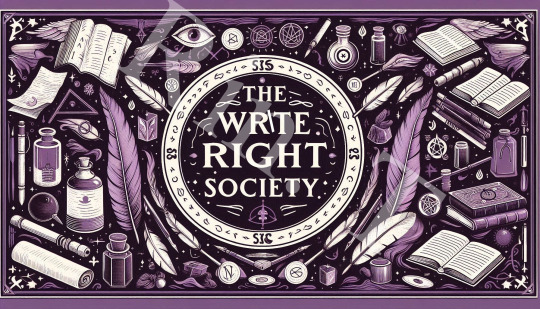
758 notes
·
View notes
Text
Introduce characters
Here are some ways to introduce characters in a story
The Action Introduction, Show the character in the midst of an exciting or significant action. This immediately captures the reader's attention and gives them an impression of the character's personality. For example, "With a swift swing of her sword, Maya cleaved through the enemy ranks, her determined gaze never wavering."
The Dialogue Introduction, Introduce the character through a captivating conversation or monologue that reveals their thoughts, beliefs, or conflicts. This allows readers to get a glimpse into the character's personality and motivations. For example, "As the rain poured down, James leaned against the lamppost and muttered, 'Life's just a series of missed opportunities, isn't it?'"
The Physical Description Introduction, Describe the character's appearance in a vivid and memorable way. Focus on unique features or attributes that make them stand out. For example, "Her emerald-green eyes shimmered like pools of liquid wisdom, and her silver-streaked hair cascaded down her back like a flowing river."
The Entrance Introduction, Have the character make a grand entrance that immediately grabs attention. This could involve a dramatic arrival or an unexpected appearance that disrupts the scene. For example, "The doors swung open, and in walked a tall figure cloaked in darkness, their presence filling the room with an air of mystery and intrigue."
The Symbolic Introduction, Use symbolic elements or objects to introduce the character. This can be a powerful way to convey their personality or role in the story. For example, "As the sun set behind the mountains, a solitary figure emerged from the shadows, their footsteps leaving behind a trail of delicate rose petals."
The Flashback Introduction, Begin with a flashback or memory that provides insight into the character's past and sets the stage for their introduction in the present. This can create intrigue and a sense of anticipation. For example, "Sarah closed her eyes and let her mind drift back to that fateful day in her childhood, the day that shaped her into the strong, resilient woman she had become."
The Contrast Introduction, Introduce the character by highlighting a sharp contrast between their external appearance or behavior and their inner thoughts or emotions. This can create intrigue and pique the reader's curiosity. For example, "Despite his rugged exterior and tattooed arms, Jake possessed a gentle touch and a heart that yearned for love and acceptance."
1K notes
·
View notes
Text

can't get the image out of my head for real
2 notes
·
View notes
Text
Tumblr Tuesday: Brills!
Hello to all sleuths, dead or alive, demon-tormented or pixie-riddled! You're celebrating the dead boy detectives and their friends and foes in style, and we're so here for it.
(Spoilers ahead! Please proceed with the same caution you would perhaps employ upon approaching a ghost trapped in the here and now <3)
@masdane:
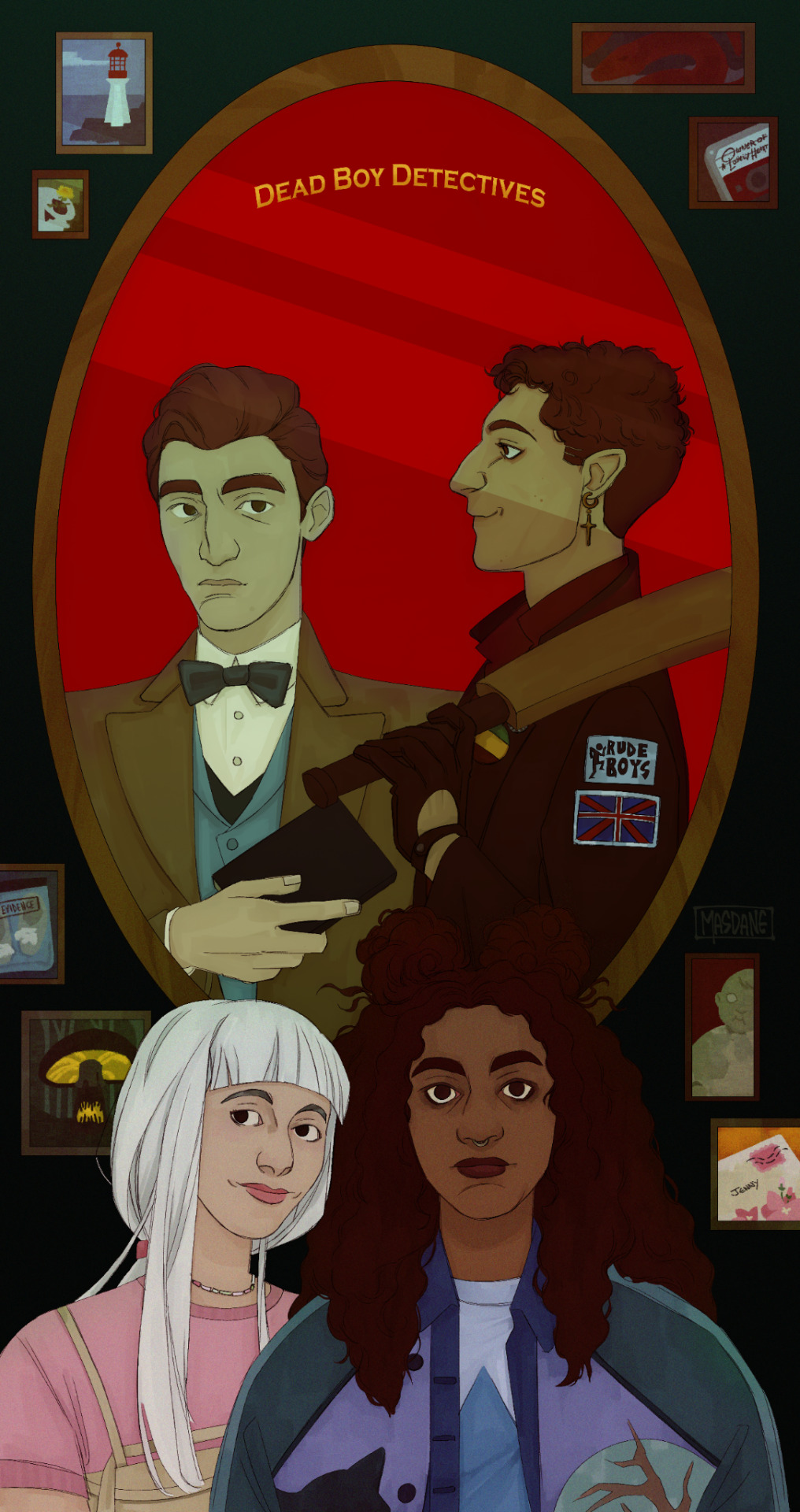
@meybuyan:
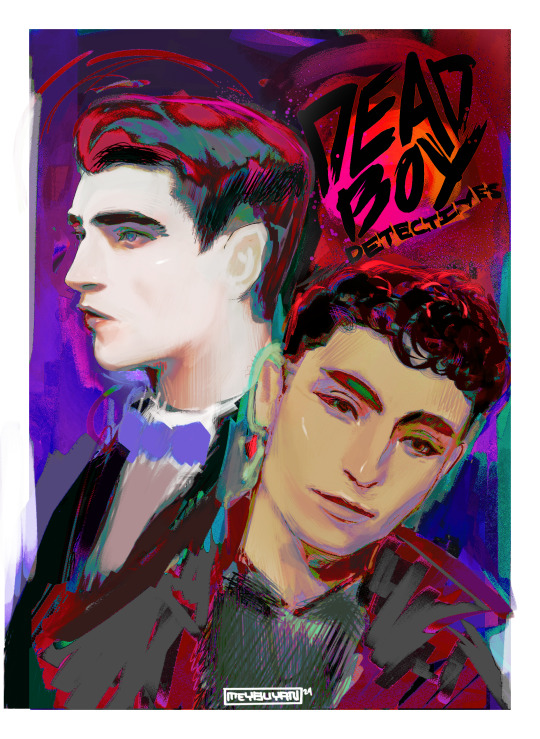
@oldekvitee:
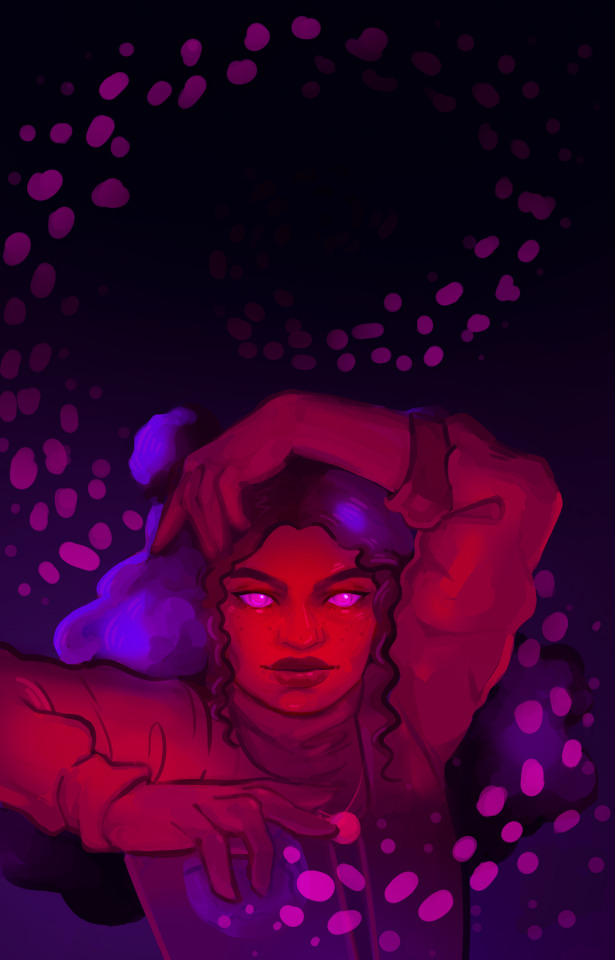
@gh0st-fl0wers:
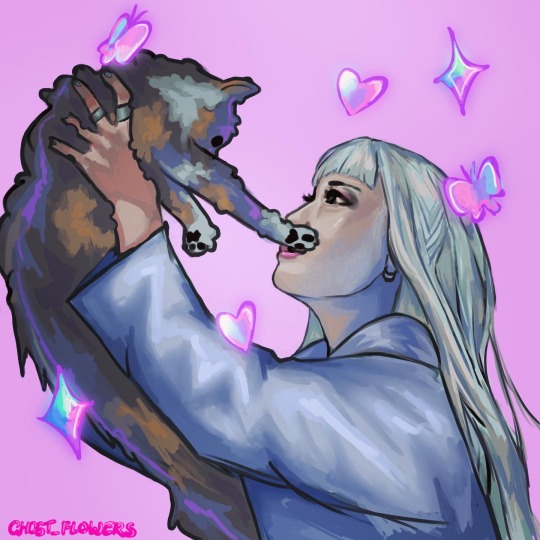
@leahaart:
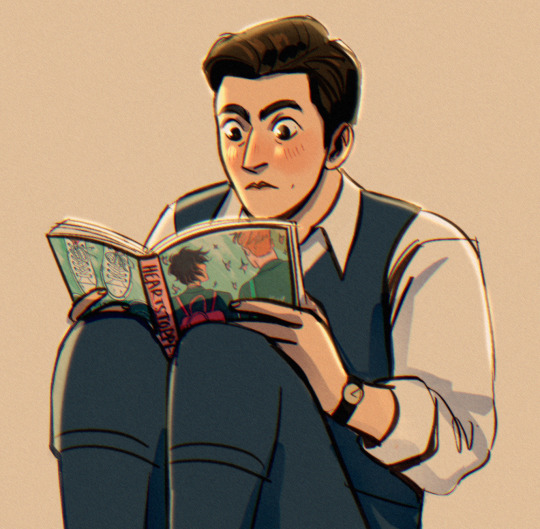
@dotswithbrainrot:
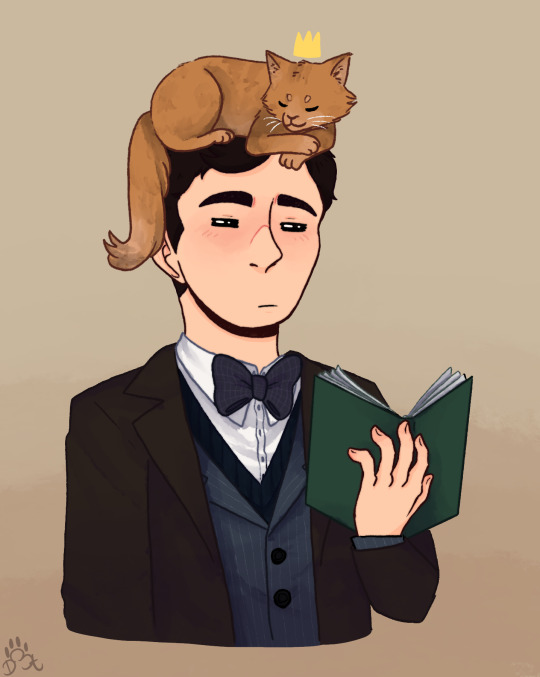
@uselessheretic:
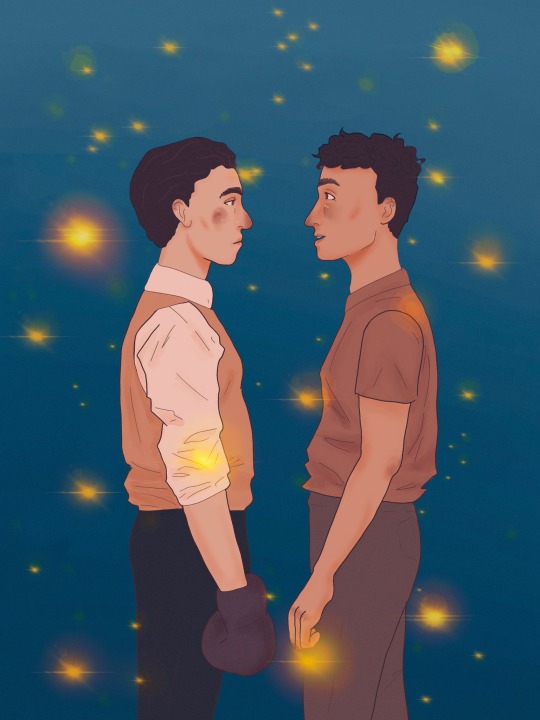
@lottiedoesthings:

@royale1803:
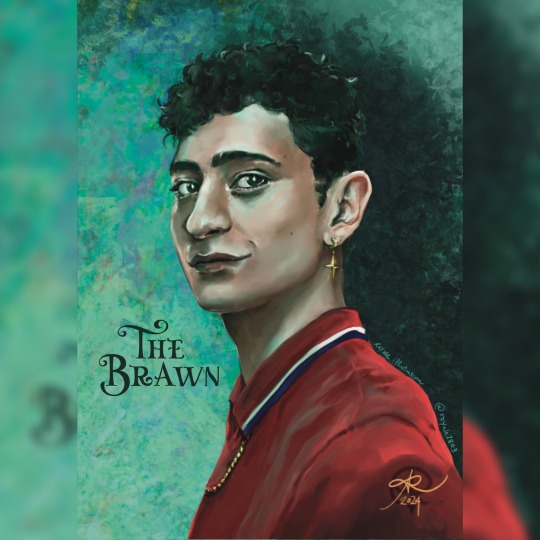
@miyunnnaise:

@emeriart:
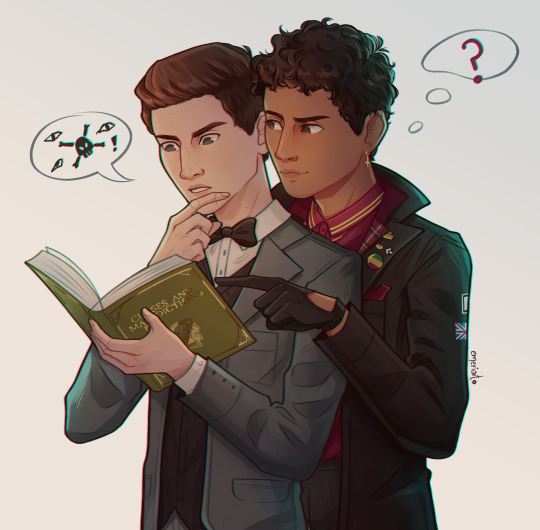
@vveris:
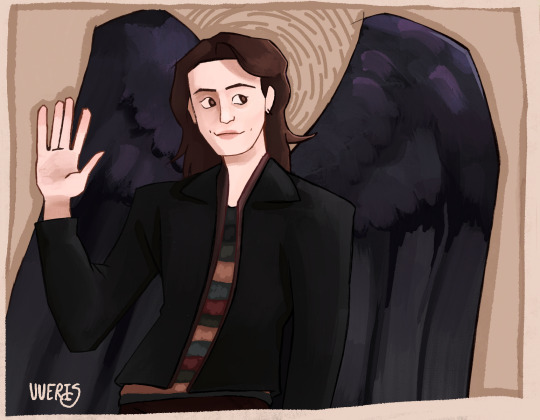
@call-me-oluss:
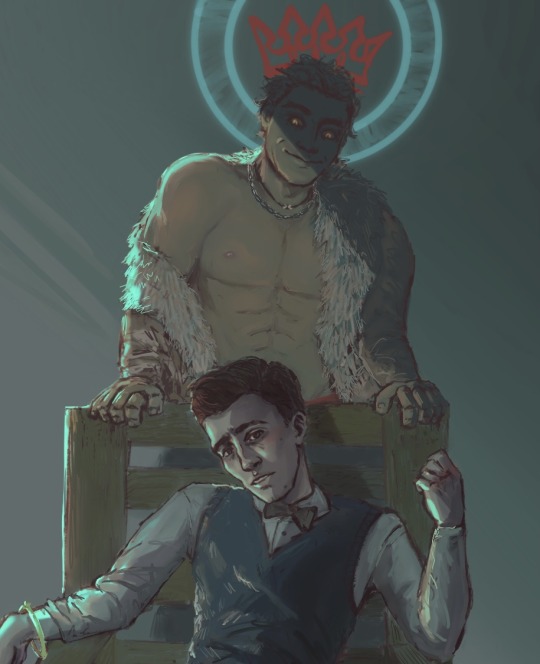
@breenanabread:

@lilyznow:
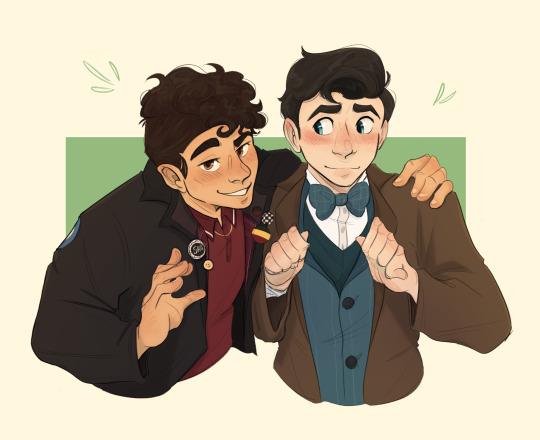
@lorastyrels:
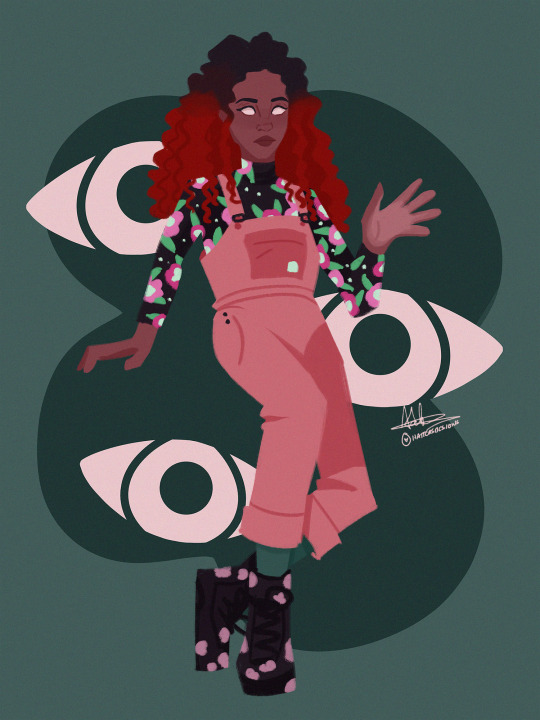
@shamelessly-obsessed:
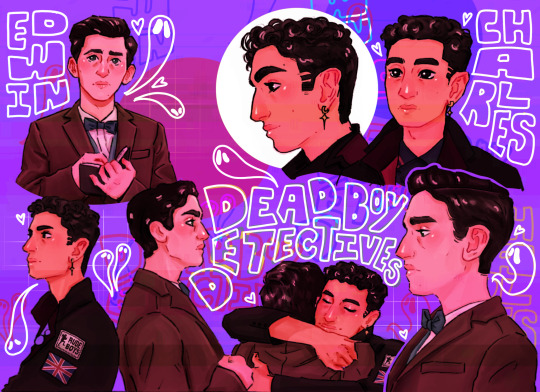
@gardenveela:
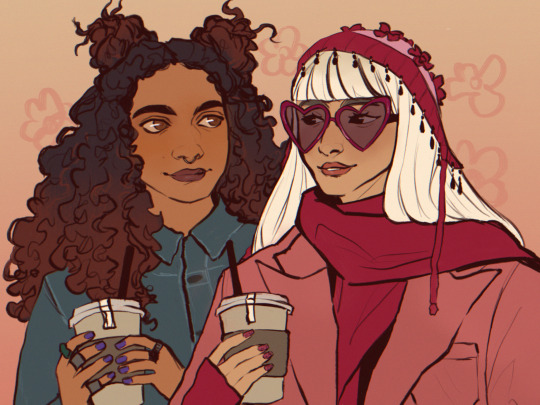
@lottiedoesthings:
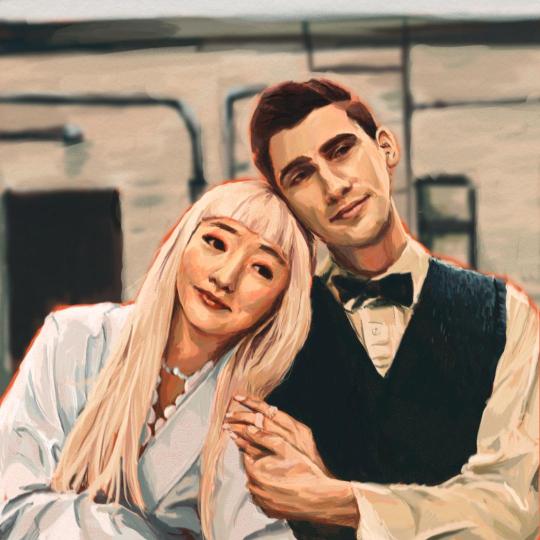
@hansoeii:
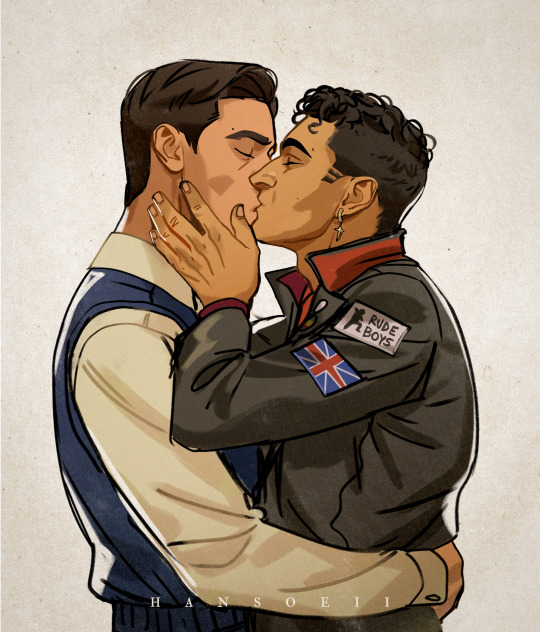
@vampirictadpole:
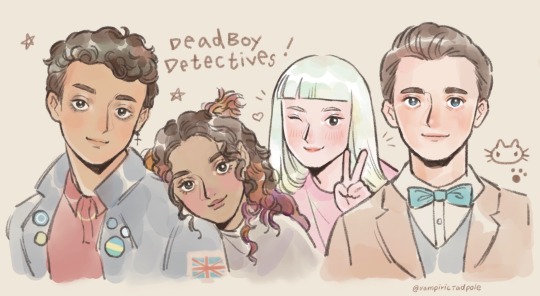
6K notes
·
View notes


